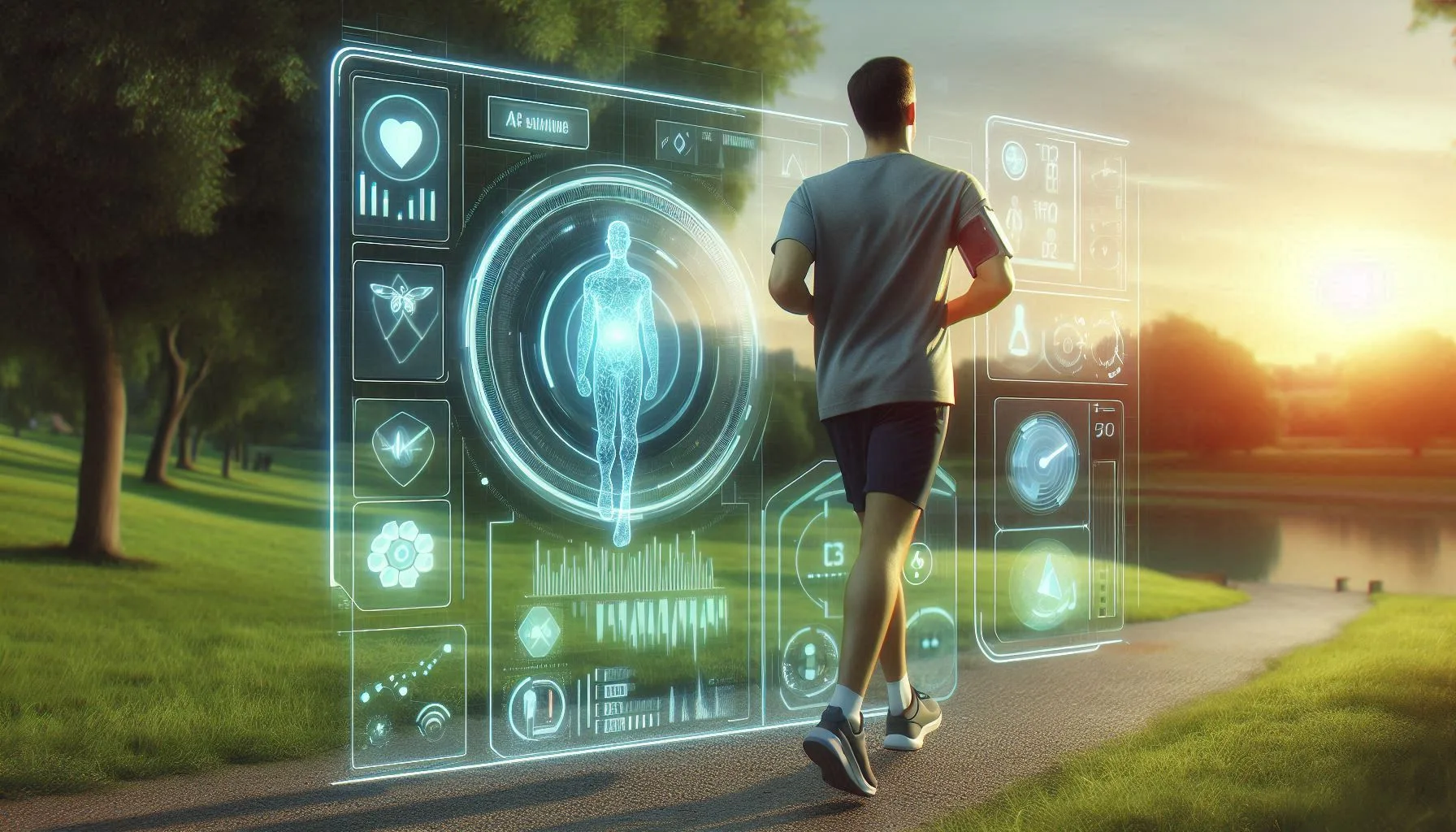Artificial intelligence (AI) is transforming industries at a rapid pace, and one of the most exciting areas of innovation lies in wearable devices. From fitness trackers to smart rings, AI integration is improving both the functionality and user experience of these devices. But the potential doesn’t stop there—AI-powered wearables are set to revolutionize how we live and interact with technology in the coming years. In this post, we’ll explore the current uses of AI in wearables and discuss what the future holds for this dynamic field.
Current Applications of AI in Wearable Devices
1. Health Monitoring
AI has made significant advancements in wearable health devices. Popular wearables like the Apple Watch, Fitbit, and WHOOP use AI algorithms to monitor heart rate, sleep patterns, and stress levels. These devices do more than just track—they analyze data in real-time to provide personalized recommendations. For example, AI can predict the onset of heart conditions by monitoring irregular heartbeats, alerting users to seek medical help early.
AI-driven health wearables are particularly beneficial for managing chronic conditions such as diabetes. Continuous glucose monitors (CGMs) equipped with AI algorithms can automatically track blood sugar levels and suggest insulin doses, reducing human error. Moreover, AI’s role in analyzing large data sets from wearables enables healthcare professionals to create more accurate treatment plans for patients.
2. Fitness Optimization
Many fitness enthusiasts use wearables like smartwatches or smart clothing to track their workouts. AI plays a crucial role in providing actionable insights. Unlike traditional trackers that only measure steps or heart rate, AI-powered wearables analyze muscle performance, workout intensity, and recovery time. Based on the user’s data, these devices can create personalized workout routines tailored to their fitness level.
Wearable tech like the Oura Ring or Garmin devices also utilizes AI to measure stress levels and guide meditation or breathing exercises. AI’s ability to process multiple data points in real-time ensures that users get a holistic understanding of their fitness progress, making workouts more effective.
3. Personalized Recommendations
AI in wearable devices enhances personalization. Smartwatches or fitness trackers equipped with AI learn user habits, preferences, and patterns. For instance, AI can analyze your sleep data over time and suggest adjustments to your bedtime routine for better rest. Similarly, fitness trackers use AI to monitor your running patterns and offer suggestions on improving form or reducing the risk of injury.
AI-powered wearables can also link to apps that provide daily wellness tips, meal plans, or stress-reduction techniques based on real-time health data. This level of personalization ensures that each user’s experience is unique and effective.
4. AI for Smart Glasses and Augmented Reality
Augmented reality (AR) wearables, like smart glasses, have seen significant AI integration. Companies like Google, Vuzix, and Microsoft have developed AI-powered smart glasses that overlay digital information onto the physical world. These devices use AI to interpret visual data and offer contextual information. For example, a surgeon using AI-enhanced AR glasses can view critical patient data during surgery without turning away from the operation.
In daily life, AI in AR glasses helps users with tasks such as navigation, translation, or object recognition. AI-powered image recognition in smart glasses is already being used to assist visually impaired individuals, providing real-time feedback and enhancing their mobility.
Future Applications of AI in Wearable Devices
1. AI in Mental Health Monitoring
Wearables are expanding beyond physical health to include mental well-being. The future of AI in wearable devices may allow for more sophisticated monitoring of emotional states. Devices could track biometrics like heart rate variability (HRV), brainwave activity, and even skin conductance to assess mental health. AI algorithms would then predict mood swings, detect stress patterns, and even help prevent conditions such as anxiety or depression by offering real-time interventions like guided breathing exercises or relaxation techniques.
2. Wearables for Chronic Disease Management
In the future, AI could advance the use of wearables in managing more complex conditions, like cancer or neurodegenerative diseases. For instance, wearable devices equipped with AI could continuously monitor biomarkers that signal the progression of diseases such as Parkinson’s or Alzheimer’s. AI would then analyze these signals, allowing for earlier detection and better disease management.
For individuals with heart disease, AI could analyze data from wearable defibrillators and alert medical professionals in case of a cardiac event, potentially saving lives. AI-powered wearables could also adjust medication dosages in real-time based on the user’s condition, offering a new layer of personalized healthcare.
3. Smarter AI-Enhanced Fashion
The integration of AI into smart clothing is another exciting future trend. AI-powered textiles could adjust their properties based on real-time environmental or physiological data. For instance, AI-driven fabrics could change insulation levels depending on the wearer’s body temperature or surrounding weather conditions. Moreover, AI could power wearables embedded in the fabric of smart clothing to collect health or fitness data unobtrusively.
Fashion could also evolve with AI to include intelligent accessories, like AI-controlled jewelry or smart shoes that track posture and provide feedback to reduce strain or improve movement efficiency.
4. Seamless Human-AI Interaction
AI wearables in the future will offer deeper integration with our daily lives, becoming more intuitive and less noticeable. One of the most ambitious projects in wearable AI is brain-computer interfaces (BCIs), which would allow for direct communication between the brain and wearable devices. This future vision could enable hands-free control of multiple devices, from smartphones to smart home appliances, making technology interaction smoother and more intuitive.
AI-enhanced smart rings, glasses, and clothing would serve as extensions of the human body, responding to commands before they are even consciously given. For example, your wearable could sense when you’re about to become stressed and immediately trigger calming stimuli, such as soothing music or an alert to take a short walk.
5. Security and Authentication
As AI wearables become more integrated into our lives, they will also improve in security and authentication. Future AI-powered wearables could use biometric data, such as heartbeat patterns or facial recognition, to authenticate user identity for payments, unlocking devices, or accessing sensitive information. This type of AI-enhanced security would offer a seamless and highly secure experience, removing the need for passwords or physical keys.
Wearables could also use AI to detect abnormal behaviors in real-time, flagging potential security threats or fraud attempts. For example, AI could analyze the user’s typical walking pattern and flag suspicious activity if the pattern deviates unexpectedly.
Conclusion: The Future Is Bright for AI Wearables
AI is already changing the way we use wearable technology, but its future promises even more revolutionary developments. From health monitoring and fitness optimization to mental well-being and personalized fashion, AI wearables will continue to shape how we interact with technology and improve our quality of life. As AI technology advances, we can expect wearables to become even more integrated into our daily routines, offering smarter, more personalized, and intuitive experiences. The future of AI in wearables is not just about technology; it’s about enhancing human potential and well-being.




